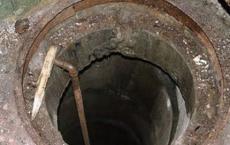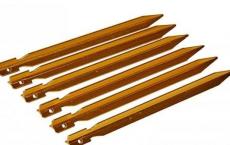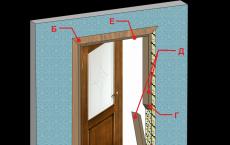The choice of welding current depending on the diameter of the electrode
Welding is considered one of the most reliable ways to obtain a high-quality permanent metal joint. Electrodes are one of the main consumables used in this area. They are created in such a way as to correspond as much as possible to the metal with which they interact, so that in the end a homogeneous mass is obtained. But the material is far from the only parameter. The thickness is very important, on which the required power of the apparatus depends, as well as the depth of the welded part of the metal.
It is important not only to choose them correctly, but also to use them correctly. Here, not only the skill of the welder is required, since the correctly selected equipment mode also contributes to the success of the procedure. The experience of past generations has already helped to derive the basic data, how to choose the right parameters for a particular material and how the welding current depends on the electrode diameter. Now it is not at all necessary to calculate all the data on your own, but you can simply refer to the calculations already made so as not to make mistakes during work.
Operation modes
The current strength when welding with an electrode is selected depending on many factors according to the specified mode. The mode includes the main indicators, which are determined by the initial data. You can define the desired shape of the seam, its size and quality. The more data, the higher the quality of work. The main parameters are:
- Electrode diameter;
- His brand;
- Position during operations;
- Strength and type of current;
- Polarity;
- The number of layers in a seam.
With a multilayer seam, the mode can change, as well as the diameter and other parameters. The initial data is taken from the electrodes, which, in turn, are selected for a certain brand of metal. If the general data contains values only for the lower position, then there is nothing to worry about. In the vertical position, the number of amperes is reduced from the nominal by 10-20%, and in the ceiling - by 20-25%. This is due to the fact that the metal does not melt so quickly and does not drain from the seam. It is also worth noting that for ceiling welding, the maximum diameter is 4 mm. Welding current and electrode diameter have a directly proportional relationship here. Its genus is also determined immediately, as it is indicated in the technical data on the pack.

Current selection
The diameter of the consumables is selected according to the thickness of the part to be welded, not to mention the size of the seam and the welding method. If it is necessary to weld a surface with a width of 3-5 mm, then the diameter should be chosen 3-4. Up to 8 mm wide, 5 electrodes are enough. For each of these positions, you need to choose your own number of amperes:
- The current when welding with a 3 mm electrode should lie in the range from 65 to 100 A. This variation depends on the metal and the selected position. To begin with, it is recommended to set the average value, in this case 80 A.
- The current strength when welding with a 4 mm electrode ranges from 120 to 200 A. This is one of the most common types of diameter that is used in industry, as it is suitable for working with both large and small seams.
- At 5 mm, a force of 160 to 250 A will be required, depending on the position and the type of metal chosen. This is a fairly massive consumable and the number of amperes here depends on the required penetration depth. To make a bathroom with a depth of more than 5 mm, the maximum full power will be required. For standard modes, a power of 200-220 A will be enough. For long-term work with such things, you should have a high-quality and reliable transformer of sufficient power.
- 6-8mm electrodes need a minimum of 250A, although heavy duty applications may require 300-350A.

Welding current setting
"Note! An incorrect choice of the mode will lead to the fact that the metal will not be welded if the current is not enough, and if it is exceeded, the workpiece will be weeded.
It is worth noting that the current trend in the production of compact welding machines for home use makes consumables 1; 1.5; 2 mm. For such values, a force from 30 to 45 A is suitable, but at the same time, the adjustment on the device should be quite smooth, since even a small error can be critical here.
Correlation table of electrode and welding current
Current selection mode for welding standard butt joints:
| Seam type | Diameter, mm | Current, A | The thickness of the metal on the workpiece, mm | Gap before welding, mm |
| 1 sided | 180 | 3 | ||
| 2-sided | 4 | 220 | 5 | 1.5 |
| 2-sided | 5 | 260 | 7-8 | 1.5-2 |
| 2-sided | 6 | 330 | 10 | 2 |
You can also use the universal table for a wide range:
| Workpiece thickness, mm | 0,5 | 1-2 | 3 | 4-5 | 6-8 | 9-12 | 13-15 | 16 |
| Electrode thickness, mm | 1 | 1,5-2 | 3 | 3-4 | 4 | 4-5 | 5 | 6-8 |
| Current strength, A | 10..20 | 30..45 | 65..100 | 100..160 | 120..200 | 150..200 | 160..250 | 200..350 |
The voltage during current welding on modern devices is set automatically, so this parameter is not taken into account. For the most common operations, you should have all the necessary data at your fingertips. Also, do not forget that each device has its own errors, therefore, everything should be adjusted at your own discretion, starting from the given modes.



